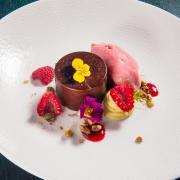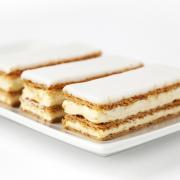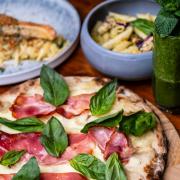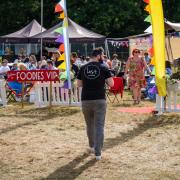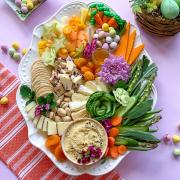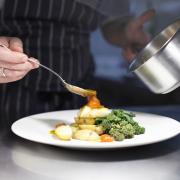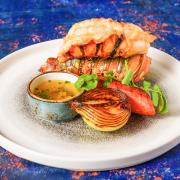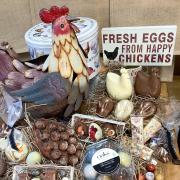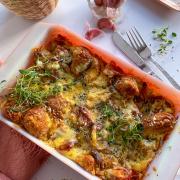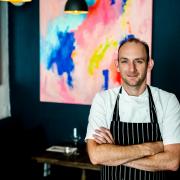Tappers Gin uses hyper-local ingredients to create a gin that reflects its coastal location. How does it taste? Fabulous.

In 2016 Steve Tapril (at last, his friends would say) decided to make his own gin. A self-confessed gin obsessive, his fixation with discovering new brands and discussing, at great length, the tasting notes for each one had driven said friends to the edge of reason.
“I come from an IT background,” he says, “but spent all my free time visiting gin festivals and talking about gin. My friends eventually told me to either turn my obsession into a living or find new friends. Tappers Gin was the result.”
Steve wanted to create a gin using botanicals that reflected his location, West Kirby, sitting prettily between sea and countryside, the scent of salt always in the air.
“The heart of gin lies in the juniper berry, of course, but to this we can add botanicals to create a unique flavour, including completely local ingredients. In Tappers gins theses are sea beet – which gives the gin a savoury overtone; red clover - for a floral, sweeter top note; and chickweed – a fresh, green flavour.

“At the start I foraged for these myself, but as demand grew I found myself a grower who could deliver the quality I want in a sustainable, ethical fashion.”
So sure was he of his ingredients that it took him only four attempts to create the flavour profile he sought, before spending 18 months getting ready to launch his brand, including the many legal requirements that surround the manufacture of alcoholic drinks. At this point, he was able to make around nine bottles per week and was still working in IT. It was meeting Simon Rimmer, at his West Kirby restaurant, The Viking Pub, that started the ball rolling to making Tappers a full-time occupation.
Simon Rimmer says: “He came into the pub, said he’d made a gin and did I want to stock it. It turned out I did.” In fact, Rimmer was so impressed with the gin that he is now a partner in the business.

Steve’s approach to his gin’s flavour profile isn’t unusual, but his method of making it is. Most gins you will find are London Dry gins, made through mixing the raw grain spirit and botanicals in a copper still and boiling it up. The steam that comes from this brings with it the essence of the botanicals, is diluted to a safe and legal AVB, and then bottled. Steve chose to use the compounding method. In this way, the botanicals are added to the grain spirit and left to release their flavours, before being strained away and the resulting liquid diluted to the correct ABV. It’s not as easy as it sounds, as every botanical will of course release its flavours at a different pace and interact with the others in the mix. There is a real skill to creating a consistent flavour time and time again.
“Using the compounding method delivers a really complex, full-bodied gin with a very different mouthfeel,” he says, “I have a recipe, but the method plays a huge role in the end result. It’s all about the layering of the ingredients, the way they are grouped and the quality of every ingredient I use. I will only ever use the highest quality and freshest of ingredients and you can tell. However, I had no idea of quite the huge difference compounding makes until I created a second gin using the same ingredients but with the copper still method.”
Steve’s first release was his Darkside Gin. It’s delicious – a really interesting, rich and almost savoury flavour, fabulously smooth and instantly moreish. Steve says that, interestingly, it’s garnered a lot of fans in the whisky drinking community, for its rich, smoky tones. It’s also, fascinatingly, not ‘gin coloured’, rather than clear, it’s a light amber shade, a result of the fresh juniper berries crushed into the mix.
Tappers Brightside Gin is the sister to Darkside, and in contrast to Darkside’s moody, mellow tones, is a light, refreshing, easy drinker that could see me through a summer garden party with style. It’s quite extraordinary to me that both are created from precisely the same mix of ingredients, with only the method changing. I can’t decide which I prefer, both are delicious, but with the cold, dark and damp nights drawing in, I think Darkside will be my winter tipple and I shall herald the arrival of spring with Brightside.

Speaking of heralds... Steve has nine gins in his range now, Brightside and Darkside; four seasonal gins – with the clues in the title: Wintergreen, Spring Florals, Falling Leaves and Three Fine Days. He has also added three specials: Hydropathic Pudding Fruit Cup (think luscious summer pudding); Eggcentric Chocolate Gin, for when you want to see the Easter Bunny; and –drum roll please – Figgy Pudding. It is the last of these that must surely herald a simply delightful Christmas; a compound gin packed to the rafters with fruits and spices, and one I cannot wait to try for myself.
Here’s to Tappers Merry gin-mas, one and all!





